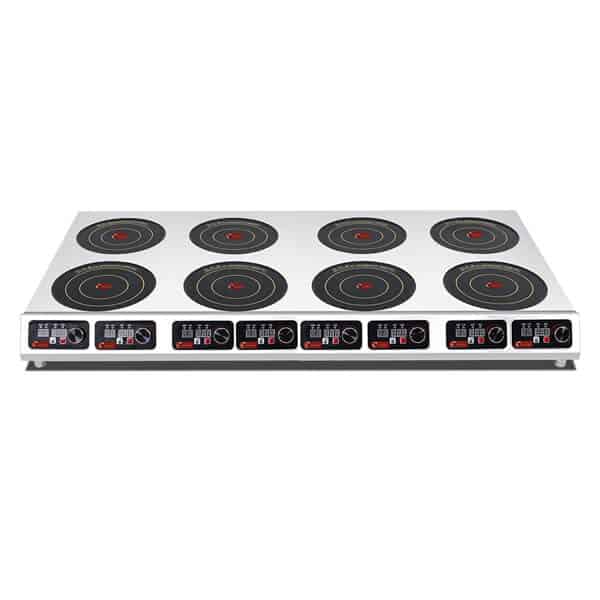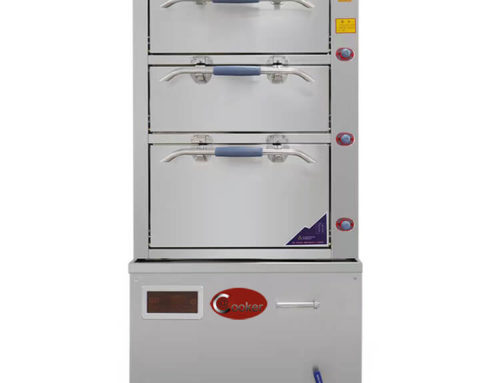Kitchen Equipment Capacity Guide: Match Output to Your Operation Size & Menu
Determining the right kitchen equipment capacity and output hinges on three core factors: your operation size (daily customer volume), menu complexity (cooking methods, item variety), and peak demand (rush hours). Mismatched capacity leads to bottlenecks (slow service, overcooked food) or wasted costs (paying for unused capacity). AT Cooker’s 2024 analysis of 200 restaurant operations found that businesses with well-matched equipment capacity reduced service time by 35% and cut equipment costs by 20%. This guide breaks down how to calculate your needs, with tailored recommendations for small, medium, and large operations—featuring AT Cooker’s commercial cooking equipment (induction cooktops, bratt pans, pasta cookers) as examples of scalable, menu-aligned solutions.
Medium (50–150 Daily Customers)
Large (150+ Daily Customers)
Menu-Driven Specialization
Peak Demand Planning
1. Align Capacity with Operation Size (Daily Customer Volume)
Your daily customer count is the primary driver of kitchen equipment capacity. A small café serving 30 customers/day needs far less output than a large restaurant handling 200+—here’s how to match each size:
• Compact oven (1–2 rack)
• Small stockpot (10–20L)
• Multi-functional equipment (e.g., combo griddle/cooktop)• HP-S1 Single Burner Induction Cooktop (3.5kW)
• QRPLT-A5C1 Compact Induction Griddle
• 10L Stainless Steel StockpotMedium (Diner, Mid-Size Restaurant)50–150• 4–6 burner cooktop (3–5kW per burner)
• 2–3 rack oven
• Medium stockpots (20–50L)
• Specialized equipment (e.g., pasta cooker, bratt pan)• BZT-A6C4 4-Hob Commercial Induction Cooktop
• ATT-ABT-BP 30L Tilting Bratt Pan
• 25L Induction Pasta CookerLarge (Hotel, High-Volume Chain, Banquet Hall)150+• 8+ burner cooktop (5–10kW per burner)
• Convection ovens (4+ racks)
• Large stockpots (50–170L)
• Multiple specialized units (e.g., 2 pasta cookers, 1 large bratt pan)• BZT-A6C8 8-Hob Commercial Induction Cooktop
• 98L Induction Stockpot
• 2x 50L Induction Pasta Cookers
“We’re a small café serving 40–50 customers daily. Initially, we bought a 4-burner cooktop thinking we’d grow fast—but it took up too much space and wasted energy. Switching to AT Cooker’s single-burner cooktop and compact griddle saved us $80/month in electricity and freed up counter space. It’s the perfect capacity for our size.”
2. Let Menu Complexity Dictate Equipment Type & Specialization
Your menu determines commercial cooking equipment needs more than size alone. A burger joint needs griddles and fryers, while an Italian restaurant requires pasta cookers and stockpots. Below’s how menu style influences equipment choices:
3. Plan for Peak Demand (Not Just Average Volume)
Equipment must handle peak service times (e.g., lunch rush 12–2 PM, dinner 6–8 PM)—otherwise, you’ll face delays and customer complaints. To calculate peak capacity needs:
- Track your busiest 2-hour window: Count customers and menu items served (e.g., 80 customers, 100 items).
- Calculate equipment output rate: Most commercial cooktops handle 10–15 items per hour per burner; pasta cookers handle 20–30 servings per hour.
- Match equipment quantity to peak output: For 100 items in 2 hours, you need 4–5 burners (100 items ÷ 2 hours ÷ 12 items/burner/hour = ~4.2 burners).
A fast-food restaurant owner said: “We used to have 3 burners and struggled during the 12–2 PM rush—orders backed up by 20 minutes. Adding a 4th burner (AT Cooker’s double-burner unit) cut wait times to 5 minutes. We planned for peak, not average, and it made all the difference.”
4. Small-to-Medium Operations: Prioritize Multi-Functional Equipment
Space and budget constraints mean small-to-medium restaurant kitchen setups benefit most from multi-functional equipment—one unit that handles multiple tasks. Examples include:
- Combo Griddle/Cooktop: Cooks burgers (griddle) and sautés veggies (cooktop) in one unit—saves 50% counter space.
- All-in-One Pasta Cooker/Stockpot: Boils pasta and simmers sauce—eliminates the need for separate pots.
- Induction Cooktops with Multiple Power Levels: Adjust from low heat (simmering) to high heat (stir-frying) for versatile use.
AT Cooker’s BZT-A6C4 4-hob cooktop is a favorite for medium operations: “We use two hobs for sautéing, one for simmering, and one for boiling—all in one unit,” said a diner owner. “It’s like having four pieces of equipment in one.”
5. Scalability: Plan for Growth & Menu Changes
Choose kitchen equipment with scalable capacity to avoid replacing units as your business grows. Look for:
- Modular Equipment: AT Cooker’s induction cooktops can be added in increments (start with 4 hobs, add 4 more later) without reconfiguring the kitchen.
- Expandable Capacity: Stockpots with stackable lids or cooktops with extra wiring for future burners.
- Multi-Menu Compatibility: Equipment that works for your current menu and future additions (e.g., a bratt pan that handles stir-fry now and braised meats later).
“We started as a small burger joint with AT’s 2-burner cooktop. When we added salads and soups, we just added two more hobs to the modular unit—no need to buy a new cooktop. Now we’re a medium diner, and the same base unit still works. Scalability saved us $1,500 in replacement costs.”
6. Budget-Friendly Choices: Prioritize Essentials for Affordable Gear
For cost-conscious operations, select affordable commercial kitchen gear by focusing on essential functions over luxury features:
- Skip Unnecessary Features: A basic induction cooktop (no touchscreen) works as well as a premium model for most tasks—saves 20–30% cost.
- Buy Commercial-Grade Basics: AT Cooker’s 304# stainless steel stockpots are durable and affordable—avoid overpaying for branded “chef” lines.
- Lease High-Cost Specialized Equipment: If you only use a bratt pan 2 days/week, lease it instead of buying—reduces upfront costs.
A new restaurant owner said: “We bought AT Cooker’s basic 4-hob cooktop instead of a premium model with a touchscreen. It does everything we need, and we saved $600—money we used for other essentials like refrigeration.”
7. Kitchen Layout: Optimize Placement for Capacity Efficiency
Even the right capacity equipment fails if poorly placed. Restaurant kitchen layout should:
- Place high-use equipment (cooktops, griddles) near prep stations to reduce staff movement.
- Leave 18–24 inches of space around equipment for safe operation (critical for large units like bratt pans).
- Align equipment with workflow (e.g., pasta cooker near the sauce station, fryer near the assembly line).
AT Cooker’s team offers free layout consultations: “They helped us place the cooktop next to the prep table and the pasta cooker near the service window,” said a café owner. “Staff movement dropped by 40%, and we serve 10 more customers per hour.”
AT Cooker’s Step-by-Step Capacity Planning Process
To find your ideal kitchen equipment capacity:
1. Calculate Daily & Peak Volume: Track customers and menu items for 1 week to find averages and peaks.
2. Map Menu Cooking Needs: List each item’s cooking method (boiling, grilling) to identify required equipment types.
3. Match Equipment to Volume: Use the tables above to select capacity (e.g., 4 burners for 50–150 customers).
4. Plan for Growth: Choose modular or scalable units to avoid future replacements.
5. Optimize Layout: Ensure equipment placement supports workflow efficiency.
AT Cooker’s team can tailor this process to your business—whether you’re a food truck or a large hotel. We’ll analyze your volume, menu, and space to recommend equipment that meets current needs and grows with you.
Get AT Cooker Custom Kitchen Equipment Capacity Assessment
Share your daily customer volume, menu type, and kitchen size, and we’ll deliver a personalized equipment capacity plan—including recommended models, layout tips, and cost estimates.

